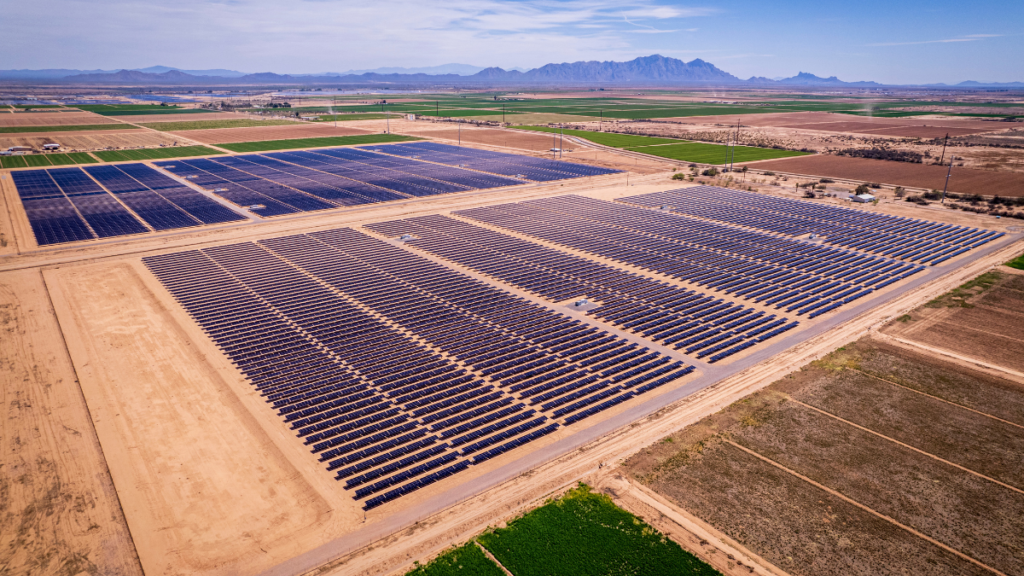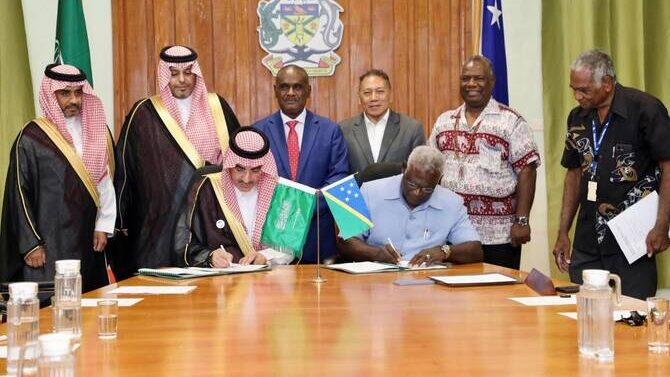Saudi Arabia Joins $42M Project to Power Solomon Islands with Solar Energy
In a landmark move for green development in the Pacific, the Saudi Fund for Development (SFD) has announced a $10 million commitment to co-finance a major solar energy project in the Solomon Islands. The funding is part of a larger, $42 million Renewable Energy Development Project aimed at transforming the country’s electricity sector.
The initiative is set to drastically reduce the Solomon Islands’ dependence on imported diesel fuel and promote long-term sustainable and affordable energy solutions for its citizens. For a nation facing soaring electricity costs and environmental risks, this project could be a game-changer.
A Nation Turning Toward the Sun
The Solomon Islands, an archipelago of around 700,000 people, currently gets about 98% of its electricity from diesel, a fuel that is not only costly to import but also environmentally damaging. With rising global fuel prices, the country’s energy bills have surged, putting strain on households, businesses, and government operations alike.
This new solar project marks a strategic pivot—one that leverages the island nation’s abundant sunlight to build a cleaner, cheaper, and more resilient energy system.
What the Project Involves

The Solomon Islands Renewable Energy Development Project is designed to upgrade and diversify the nation’s power infrastructure.
Key Components:
- Solar farms will be constructed in Guadalcanal and Malaita provinces, two major population centers.
- A utility-scale energy storage system will be built in Honiara, the capital city, to help stabilize the grid and store surplus solar energy for use during the night or cloudy weather.
- A rooftop solar pilot program will be launched at two regional schools, not only to power the institutions but also to educate students about the importance and potential of renewable energy.
This practical blend of infrastructure and education aims to embed solar thinking into the future generation while solving current power shortages.
Who’s Funding the Project?
The $42 million investment is being pulled together by several international and local partners:
- Asian Development Bank (ADB):
- $10 million concessional loan
- $5 million grant
- Saudi Fund for Development (SFD):
- $10 million grant
- Solomon Power (state-owned utility):
- $10 million investment
- Government of Solomon Islands:
- $7 million in tax exemptions and duty waivers
This is the first ever collaboration between the ADB and SFD on a project of this scale in the Pacific region, symbolizing a new wave of international cooperation to tackle climate change and promote clean energy in vulnerable island nations.
Why This Matters
Energy experts and development advocates say this project could be a template for other Pacific nations facing similar challenges.
“Island nations often rely on expensive, polluting fuels simply because of geographic isolation,” said Shane Rosenthal, Regional Director at ADB’s Pacific Liaison and Coordination Office. “This project will cut that dependency, lower emissions, and make energy more accessible.”
Rosenthal emphasized the long-term benefits: “We’re not just building solar panels—we’re building a pathway to energy independence.”
The Broader Picture
This isn’t the first time the Solomon Islands has explored solar energy. In 2016, the United Arab Emirates and New Zealand collaborated to build a 1-megawatt solar plant on the island, which at the time provided about 7% of national electricity demand. But that was just the beginning.
Now, with global pressure to reduce emissions and rising fuel costs making diesel less feasible, the government is doubling down on solar.
According to the Solomon Islands’ Ministry of Mines, Energy and Rural Electrification, the country aims to have renewables contribute 30% of its energy mix by 2030.
This latest investment moves the nation closer to that goal.
Economic and Environmental Impact
The anticipated benefits of the new solar project are both immediate and far-reaching.
1. Reduced Fuel Imports
Switching from diesel to solar will save millions in annual fuel imports, freeing up funds for education, healthcare, and infrastructure.
2. Lower Energy Costs
Electricity generated from solar is significantly cheaper over time. This will benefit not only homes but also local businesses, schools, and hospitals.
3. Job Creation
From construction to ongoing maintenance, the solar energy sector is expected to create local jobs and boost technical training programs.
4. Cleaner Air, Healthier Lives
Reduced reliance on diesel will lead to fewer emissions and cleaner air, especially in urban areas like Honiara, where pollution levels are rising.
Education & Community Engagement
One of the standout features of the project is its focus on education and awareness. The rooftop solar pilot at two schools isn’t just about powering classrooms—it’s about planting the seed of sustainability in young minds.
These students will be the engineers, policy-makers, and environmental stewards of tomorrow. By involving them early, the project ensures its impact lasts well beyond the current generation.
A Model for the Region
As the effects of climate change become more visible—rising sea levels, erratic weather patterns, and coastal erosion—Pacific nations are under increasing pressure to find clean, adaptable energy solutions.
If the Solomon Islands’ solar project proves successful, it could inspire similar collaborations across neighboring nations like Vanuatu, Fiji, and Papua New Guinea.
And with partners like Saudi Arabia and ADB stepping in, the funding model is one that could be replicated, scaled, and tailored to suit each country’s unique needs.
Final Thoughts
The Solomon Islands’ transition to solar is more than just an energy upgrade—it’s a leap toward energy justice, climate resilience, and economic independence.
Through smart international partnerships and bold local vision, the islands are showing the world that even small nations can make a big impact in the global fight for sustainability.
As the project rolls out in the coming months, eyes from around the Pacific—and the world—will be watching to see how sunlight and strategy can combine to power a cleaner future.
Do follow gulf magazine on Instagram
for more information click here



